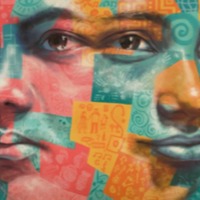
Y
There are an estimated 136,000 people living on conditions of modern slavery in the United Kingdom (Global Slavery Index 2018). According to the 2017 annual figures provided by the National Crime Agency, 5, 145 potential victims of modern slavery were referred through the National Referral Mechanism in 2017, of whom 2,454 were female, 2688 were male and 3 were transgender, with 41% of all referrals being children at the time of exploitation. People are subjected to slavery in the UK in the form of domestic servitude, labour exploitation, organ harvesting and sexual exploitation, with the largest number of potential victims originating from Albania, China, Vietnam and Nigeria. This data however does not consider the unknown numbers of victims that are not reported. Y was trafficked from Nigeria to the United Kingdom at five years old. She was forced to clean, prevented from leaving the house or going to school and made to look after the family’s baby. Y was physically, emotionally and mentally abused by the family that had bought her. When she was 11, the family moved back to Nigeria and sold Y to their friend. She remained in the UK and was forced to work long hours doing housework. When she was 14, she was also forced to make cakes for the woman to sell and make money. She finally ran away and went to live with a foster family while the police and social services worked on her case.
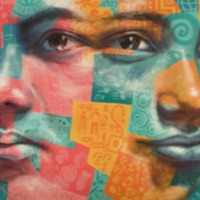
Emelia
There are an estimated 136,000 people living on conditions of modern slavery in the United Kingdom (Global Slavery Index 2018). According to the 2017 annual figures provided by the National Crime Agency, 5, 145 potential victims of modern slavery were referred through the National Referral Mechanism in 2017, of whom 2,454 were female, 2688 were male and 3 were transgender, with 41% of all referrals being children at the time of exploitation. People are subjected to slavery in the UK in the form of domestic servitude, labour exploitation, organ harvesting and sexual exploitation, with the largest number of potential victims originating from Albania, China, Vietnam and Nigeria. This data however does not consider the unknown numbers of victims that are not reported. Emelia was trafficked from Romania to the UK by a man who kept her for 3 months. Subjected to sexual violence, she was forced into prostitution where she was raped by at least seven or eight men daily. Emelia was able to escape after borrowing a girl’s phone and calling her parents. However, the man who trafficked her escaped the police and she remains is scared of retribution

Natasha
There are an estimated 136,000 people living on conditions of modern slavery in the United Kingdom (Global Slavery Index 2018). According to the 2017 annual figures provided by the National Crime Agency, 5, 145 potential victims of modern slavery were referred through the National Referral Mechanism in 2017, of whom 2,454 were female, 2688 were male and 3 were transgender, with 41% of all referrals being children at the time of exploitation. People are subjected to slavery in the UK in the form of domestic servitude, labour exploitation, organ harvesting and sexual exploitation, with the largest number of potential victims originating from Albania, China, Vietnam and Nigeria. This data however does not consider the unknown numbers of victims that are not reported. “Natasha” shares her story of being bought and sold from Romania to Italy and on to Germany and Belgium. Her final stop was Britain where she was put to work in a north London sauna. “Natasha” was finally freed from her nightmare in a police raid, a year after her abduction.
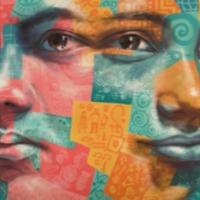
Aja
There are an estimated 17,000 people living in modern slavery in Jordan (GSI 2018). Jordan is a source, transit and destination country for adults and children subjected to forced labour, domestic servitude and sex trafficking. People are trafficked primarily from South and Southeast Asia, East Africa, Egypt and Syria. Forced labour victims experience withheld or non-payment wages, confiscation of identity documents, restricted freedom of movement, unsafe living conditions, long hours without rest, isolation, and verbal and physical abuse. Jordan relies on foreign migrant workers – many of whom are undocumented – in several sectors, including construction, agriculture, textiles, and domestic work. Aja* travelled to Jordan for work after the death of her husband. After six months her wages were withheld and she was subjected to physical abuse by her employer.
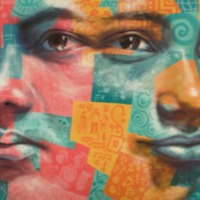
Leann
There are an estimated 17,000 people living in conditions of slavery in Canada (GSI 2018). Both Canadian and foreign citizens are exploited in forced labour and sex trafficking. Forced labour affects migrant workers under ‘low-skilled’ temporary visa streams including the low-wage and primary agricultural streams. These workers are often in restaurants, hotels, agriculture, food preparation, construction or domestic work. Sexual exploitation of Canadian citizens is the most common form of slavery detected by authorities in the country, with 93% of sex trafficking victims being Canadian. Leann developed an addiction issue after a serious industry left her in a wheelchair. She borrowed money to feed her addiction that resulted in her owing money to her traffickers, who forced her into forced criminal activity to pay off her debt. Leanna was forced to open bank accounts, assume fake identities and have multiple IDs to get money for her traffickers. Though she was arrested on a number of occasions, her traffickers were always waiting for her outside jail when she was released. This cycle continued for three years until her traffickers suspected she had stolen from them and locked her in a room where she was sexual and physical abused. She was finally able to escape when one day someone left the door open and she was helped by a passerby.
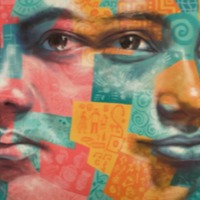
Terry Forliti
There are an estimated 403,000 people living in modern slavery in the United States (GSI 2018). Sex trafficking exists throughout the country. Traffickers use violence, threats, lies, debt bondage and other forms of coercion to compel adults and children to engage in commercial sex acts against their will. The situations that sex trafficking victims face vary, many victims become romantically involved with someone who then forces them into prostitution. Others are lured with false promises of a job, and some are forced to sell sex by members of their own families. Victims of sex trafficking include both foreign nationals and US citizens, with women making up the majority of those trafficked for the purposes of commercial sexual exploitation. In 2015, the most reported venues/industries for sex trafficking included commercial-front brothels, hotel/motel-based trafficking, online advertisements with unknown locations, residential brothels, and street-based sex trafficking. A series of traumatic events lead to a 30-year drug addiction for Terry Forliti. After her addiction lead to the breakdown of an abusive marriage, Terry found herself on the streets. She met a man who would eventually become her pimp and force her into prostitution for the next five years. Terry was eventually arrested and while spending time in jail was introduced to the Breaking Free organization who offered a housing programme to poor mothers trapped in prostitution. Terry spent three years in the programme, obtained a BA and began working for the organization helping others who had been through similar experiences
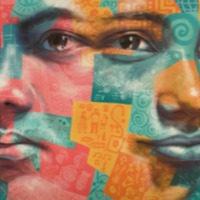
Alice
There are an estimated 403,000 people living in modern slavery in the United States (GSI 2018). Sex trafficking exists throughout the country. Traffickers use violence, threats, lies, debt bondage and other forms of coercion to compel adults and children to engage in commercial sex acts against their will. The situations that sex trafficking victims face vary, many victims become romantically involved with someone who then forces them into prostitution. Others are lured with false promises of a job, and some are forced to sell sex by members of their own families. Victims of sex trafficking include both foreign nationals and US citizens, with women making up the majority of those trafficked for the purposes of commercial sexual exploitation. In 2015, the most reported venues/industries for sex trafficking included commercial-front brothels, hotel/motel-based trafficking, online advertisements with unknown locations, residential brothels, and street-based sex trafficking. Alice was trafficked into commercial sexual exploitation in 1999 in Nebraska. She talks about the importance of education for the prevention of trafficking and teaching police and medical staff how to treat people who have been trafficked. Alice also stresses the importance of safe houses, ensuring women who have been trafficked have a safe place to go and available support.
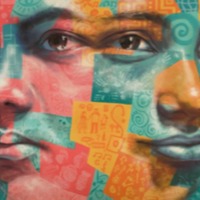
Jane B
There are an estimated 403,000 people living in modern slavery in the United States (GSI 2018). Sex trafficking exists throughout the country. Traffickers use violence, threats, lies, debt bondage and other forms of coercion to compel adults and children to engage in commercial sex acts against their will. The situations that sex trafficking victims face vary, many victims become romantically involved with someone who then forces them into prostitution. Others are lured with false promises of a job, and some are forced to sell sex by members of their own families. Victims of sex trafficking include both foreign nationals and US citizens, with women making up the majority of those trafficked for the purposes of commercial sexual exploitation. In 2015, the most reported venues/industries for sex trafficking included commercial-front brothels, hotel/motel-based trafficking, online advertisements with unknown locations, residential brothels, and street-based sex trafficking. Jane was trafficked into commercial sexual exploitation in the state of Nebraska. She talks about not being believed by friends and family, and how women who have been trafficked are often punished to a greater extent than men exploiting them.
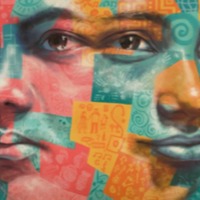
Becky
There are an estimated 403,000 people living in modern slavery in the United States (GSI 2018). Sex trafficking exists throughout the country. Traffickers use violence, threats, lies, debt bondage and other forms of coercion to compel adults and children to engage in commercial sex acts against their will. The situations that sex trafficking victims face vary, many victims become romantically involved with someone who then forces them into prostitution. Others are lured with false promises of a job, and some are forced to sell sex by members of their own families. Victims of sex trafficking include both foreign nationals and US citizens, with women making up the majority of those trafficked for the purposes of commercial sexual exploitation. In 2015, the most reported venues/industries for sex trafficking included commercial-front brothels, hotel/motel-based trafficking, online advertisements with unknown locations, residential brothels, and street-based sex trafficking. Becky was trafficked into prostitution in the state of Nebraska. She talks about her trafficking experience and stresses the importance of differentiating between those who have been trafficked and those who choose prostitution. In her own experience, failing to acknowledge this has meant that even after escape, women are still fighting to prove their point and what happened to them. Becky suggests that education in schools and among the police is important for the prevention of trafficking and in the treatment, women receive after escape.
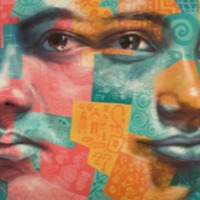
Nancy
There are an estimated 403,000 people living in modern slavery in the United States (GSI 2018). Sex trafficking exists throughout the country. Traffickers use violence, threats, lies, debt bondage and other forms of coercion to compel adults and children to engage in commercial sex acts against their will. The situations that sex trafficking victims face vary, many victims become romantically involved with someone who then forces them into prostitution. Others are lured with false promises of a job, and some are forced to sell sex by members of their own families. Victims of sex trafficking include both foreign nationals and US citizens, with women making up the majority of those trafficked for the purposes of commercial sexual exploitation. In 2015, the most reported venues/industries for sex trafficking included commercial-front brothels, hotel/motel-based trafficking, online advertisements with unknown locations, residential brothels, and street-based sex trafficking. Nancy was trafficked into prostitution, subjected to sexual abuse and violence daily. Nancy stresses the importance of education and raising awareness for both the prevention of commercial sexual exploitation and understanding how to support survivors. She highlights the need for survivors be supported by police rather than interrogated for information and have access to wider networks of support.
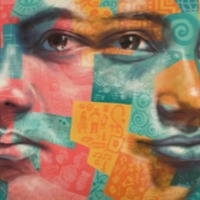
Miriam A.
There are an estimated 136,000 people living on conditions of modern slavery in the United Kingdom (Global Slavery Index 2018). According to the 2017 annual figures provided by the National Crime Agency, 5, 145 potential victims of modern slavery were referred through the National Referral Mechanism in 2017, of whom 2,454 were female, 2688 were male and 3 were transgender, with 41% of all referrals being children at the time of exploitation. People are subjected to slavery in the UK in the form of domestic servitude, labour exploitation, organ harvesting and sexual exploitation, with the largest number of potential victims originating from Albania, China, Vietnam and Nigeria. This data however does not consider the unknown numbers of victims that are not reported. Miriam A. was abused from a young age and into her marriage. She was offered the opportunity to come to Britain and start a new life away from abuse. She was promised the opportunity to study and that her children would join her later. Instead she was forced into domestic work, working 16 to 18 hours a day with no breaks. She was forced to do all cooking, cleaning, babysitting and care work. The family controlled when she slept, when she woke and what she ate. If she was allowed to speak to her children, her
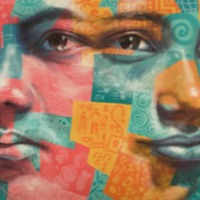
Layla
There are an estimated 136,000 people living on conditions of modern slavery in the United Kingdom (Global Slavery Index 2018). According to the 2017 annual figures provided by the National Crime Agency, 5, 145 potential victims of modern slavery were referred through the National Referral Mechanism in 2017, of whom 2,454 were female, 2688 were male and 3 were transgender, with 41% of all referrals being children at the time of exploitation. People are subjected to slavery in the UK in the form of domestic servitude, labour exploitation, organ harvesting and sexual exploitation, with the largest number of potential victims originating from Albania, China, Vietnam and Nigeria. This data however does not consider the unknown numbers of victims that are not reported. Layla* came to the UK from Kenya after escaping religious strife. She had found a school in the UK who had agreed to admit her, however upon arrival she was taken to a small house and foced into care work. Traffickers took her wages to pay back the ‘debt’ incurred from getting her to the country. Layla was forced to work long hours, prevented from spending time outside and was not properly fed. After 3 years the ‘school’ was shut down, but her trafficker continued to exploit her. Layla was finally able to leave her situation after she was diagnosed with cancer in her trafficker’s name so that he could receive the assistance payments. Layla was arrested for fraud and while police initially assumed she was the criminal, her lawyer realised she had been trafficked and helped her.
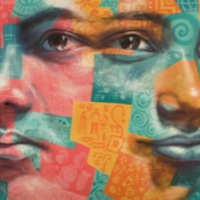
Trishna
The Global Slavery Index 2018 estimates that on any given day there were nearly 8 million people living in modern slavery in India. The GSI 2018 reports an emerging trend in northeast India where organised trafficking syndicates operate along the open and unmanned international borders, duping or coercing young girls seeking employment outside their local area in to forced sexual exploitation. Many women and girls are lured with the promise of a good job but then forced in to sex work, with a 'conditioning' period involving violence, threats, debt bondage and rape. In 2010, Trishna was 14 years old when she met a boy who lived in a village close to hers. He kidnapped her, took her to different city and sold her to traffickers who said she would have to dance to earn back the money they had paid. While Trishna was finally rescued after around 6 months, her experience with the police was not a pleasant one. They sexual abused her, threatening to tell people that she had chosen this life. Upon returning home, people in Trishna’s village did not treat her the same and her mental health has suffered as a result. In 2015, Trishna was finally able to get help through a psychiatrist and an NGO who reached out to assist her.
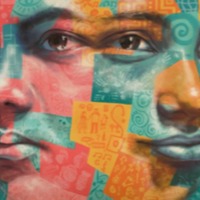
E.R.
There are an estimated 145,000 people liing in conditions of modern slavery in Italy (GSI 2018). Italy is a destination, transit, and source country for women, children, and men subjected to sex trafficking and forced labour. Victims originate from Nigeria, Romania, Morocco, China, and other countries. Female victims are often subjected to sex trafficking in Italy after accepting promises of employment as dancers, singers, models, restaurant servers, or caregivers. Romanian and Albanian criminal groups force Eastern European women and girls into commercial sex. E.R. was 15 when she was forced to marry a man she did not know over twice her age. After leaving her forced marriage, she was disowned by her family and forced into prostitution in Italy by a man she believed loved her. E.R. was subjected to rape and beatings daily before she was rescued by a friend and taken back to Albania. However, E.R. has been unable to leave prostitution in her attempts to look after her son.
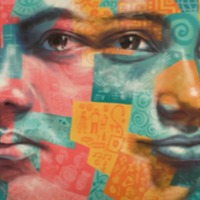
Dee
There are an estimated 9000 people living in modern slavery in Lesotho (GSI 2018). Traffickers exploit domestic and foreign victims in the country, as well as trafficking people from Lesotho abroad. Basotho children are trafficked into domestic servitude and animal herding, especially orphans who migrate to urban areas, in sex trafficking. Basotho women and girls wanting to migrate to South Africa are also often detained by traffickers in prison-like conditions and forced into sexual exploitation. Dee came into the care of Beautiful Dream Society after she was falsely promised a job. Instead she was kidnapped, held against her will and raped repeatedly before being left for dead. With the help of a woman who gave her money, Dee was able to go to the police and have her abuser arrested.
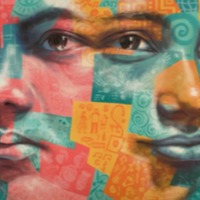
Tina B
There are an estimated 403,000 people living in modern slavery in the United States (GSI 2018). Sex trafficking exists throughout the country. Traffickers use violence, threats, lies, debt bondage and other forms of coercion to compel adults and children to engage in commercial sex acts against their will. The situations that sex trafficking victims face vary, many victims become romantically involved with someone who then forces them into prostitution. Others are lured with false promises of a job, and some are forced to sell sex by members of their own families. Victims of sex trafficking include both foreign nationals and US citizens, with women making up the majority of those trafficked for the purposes of commercial sexual exploitation. In 2015, the most reported venues/industries for sex trafficking included commercial-front brothels, hotel/motel-based trafficking, online advertisements with unknown locations, residential brothels, and street-based sex trafficking. Tina B left home with the man she thought was her boyfriend at 14 years old. He trafficked her into commercial sexual exploitation. Tina B was raped daily. She went to the police for help, but instead they arrested her and placed her into juvenile detention for prostitution.
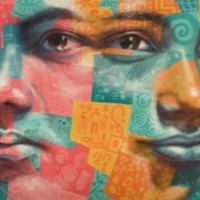
Hiral
The Global Slavery Index 2018 estimates that on any given day there were nearly 8 million people living in modern slavery in India. The GSI 2018 reports an emerging trend in northeast India where organised trafficking syndicates operate along the open and unmanned international borders, duping or coercing young girls seeking employment outside their local area in to forced sexual exploitation. Many women and girls are lured with the promise of a good job but then forced in to sex work, with a 'conditioning' period involving violence, threats, debt bondage and rape. Hiral’s* (The Survivor) life changed when her father died and debt collectors demanded her family pay off their debts or be driven from their home. To help support her family Hiral took a job looking after the children of a wealthy family hundreds of miles away. However, upon arrival, she was forced into prostitution. Hiral recalls the night the bar she was forced to work in was raided by the police and her trafficker was arrested.
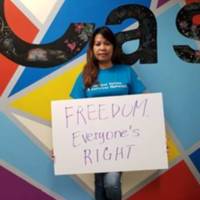
Angela (Narrative 2)
There are an estimated 403,000 people living in conditions of modern slavery in the United States (GSI 2018). The US attracts migrants and refugees who are particularly at risk of vulnerability to human trafficking. Trafficking victims often responding to fraudulent offers of employment in the US migrate willingly and are subsequently subjected to conditions of involuntary servitude in industries such as forced labour and commercial sexual exploitation. Angela Guanzon was facing the prospect of being forced into marriage or being jobless in the Philippines, leading her to seek out work abroad. She thought all her problems had been solved when she in 2005 was recruited for a health care job in California. However, upon arrival her trafficker demanded $12,000 for the ‘opportunity. Her passport was seized, and they threatened to call the police and tell them Angela had stolen something if she ran away. Guanzon was ordered to work for 10 years to pay off the debt at $300 a month. Angela was forced to work 18-hour days and sleep on the hallway floor of an elder care facility in Long Beach. Her exploitation finally ended after a neighbour noticed the signs of labour trafficking and contacted the FBI.
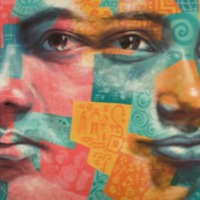
Witness A
There are an estimated 136,000 people living on conditions of modern slavery in the United Kingdom (Global Slavery Index 2018). According to the 2017 annual figures provided by the National Crime Agency, 5, 145 potential victims of modern slavery were referred through the National Referral Mechanism in 2017, of whom 2,454 were female, 2688 were male and 3 were transgender, with 41% of all referrals being children at the time of exploitation. People are subjected to slavery in the UK in the form of domestic servitude, labour exploitation, organ harvesting and sexual exploitation, with the largest number of potential victims originating from Albania, China, Vietnam and Nigeria. This data however does not consider the unknown numbers of victims that are not reported. Witness A was trafficked for commercial sexual exploitation in the UK as a minor. Witness A tells of the numerous organisations and agencies who failed to recognise that she had been trafficked, resulting in her continued exploitation. Subjected to sexual and physical violence, Witness A often found herself in contact with A&E, the police and child services who did not help her escape her exploiters and, on occasion, placed the blame upon herself. Witness A states that it was not until she reached out to the Salvation Army that she was able to escape her exploitation and was placed in a safehouse. However, Witness A talks about the lack of support available even after she was rescued from her traffickers.
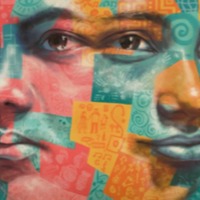
Joanna
There are an estimated 403,000 people living in modern slavery in the United States (GSI 2018). Sex trafficking exists throughout the country. Traffickers use violence, threats, lies, debt bondage and other forms of coercion to compel adults and children to engage in commercial sex acts against their will. The situations that sex trafficking victims face vary, many victims become romantically involved with someone who then forces them into prostitution. Others are lured with false promises of a job, and some are forced to sell sex by members of their own families. Victims of sex trafficking include both foreign nationals and US citizens, with women making up the majority of those trafficked for the purposes of commercial sexual exploitation. In 2015, the most reported venues/industries for sex trafficking included commercial-front brothels, hotel/motel-based trafficking, online advertisements with unknown locations, residential brothels, and street-based sex trafficking. Joanna was born in a small town in Europe/ When she was 18 she met a man who said he wanted to marry her. They began seeing each other and Joanna became pregnant. Her boyfriend took Joanna to the United States where their child was born. Unable to read, Joanna was told to sign a piece of paper at the hospital and never saw her child again. She was taken to an apartment building where other young girls like her were being kept. Joanna was forced to provide sexual services, raped multiple times a day. She was finally able to escape one day when she became ill.